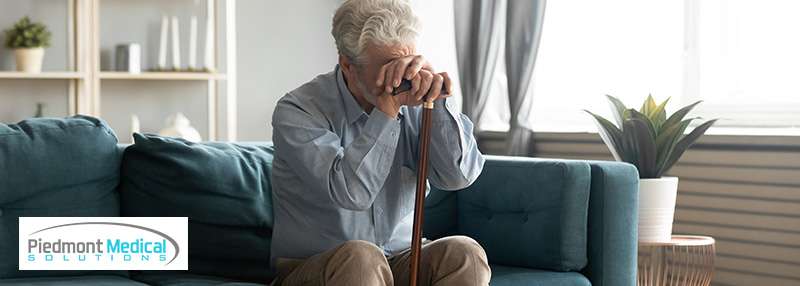Piedmont Medical Solutions
Updated Thu September 12, 2024
Published Under: Catheter Care

Using a catheter can sometimes lead to discomfort, but there are effective ways to manage and alleviate these issues. This post will address common sources of discomfort associated with catheter use and provide practical solutions to help you stay comfortable.
Identifying Common Sources of Discomfort
Understanding the common sources of discomfort can help you address them more effectively:
- Skin Irritation: Prolonged use of catheters can cause irritation around the insertion site.
- Bladder Spasms: These involuntary contractions of the bladder can be painful and uncomfortable.
- General Discomfort: This can include feelings of pressure, pain, or general unease due to the presence of the catheter.
Tips for Preventing and Managing Skin Irritation
Skin irritation is a common issue for catheter users, but these tips can help prevent and manage it:
- Keep the Area Clean: Regularly clean the catheter insertion site with mild soap and water. Avoid using harsh chemicals that can irritate the skin.
- Use Barrier Creams: Applying a barrier cream around the insertion site can protect the skin from moisture and reduce irritation.
- Change Dressings Regularly: If you use dressings, change them as recommended by your healthcare provider to keep the area dry and clean.
- Monitor for Allergic Reactions: Be aware of any allergic reactions to the materials used in the catheter or dressings and consult your healthcare provider if you notice any signs.
Strategies for Reducing Bladder Spasms
Bladder spasms can be particularly uncomfortable, but there are ways to manage them:
- Stay Hydrated: Drinking plenty of fluids can help reduce the frequency and severity of bladder spasms.
- Medications: Your healthcare provider may prescribe medications to help control bladder spasms.
- Relaxation Techniques: Practicing relaxation techniques such as deep breathing or meditation can help manage the discomfort associated with bladder spasms.
- Avoid Bladder Irritants: Limit the intake of caffeine, alcohol, and spicy foods, as these can irritate the bladder and increase spasms.
Recommended Products and Accessories for Comfort
Using the right products and accessories can significantly enhance your comfort:
- Catheter Securement Devices: These devices help keep the catheter in place, reducing movement and discomfort.
- Leg Bags: Leg bags can be more comfortable and discreet for daytime use.
- Night Bags: Larger capacity night bags can reduce the need for frequent emptying, allowing for a more restful sleep.
- Skin Barrier Wipes: These wipes can protect the skin from adhesive irritation and improve comfort.
When to Seek Medical Advice for Persistent Issues
It’s important to know when to seek medical advice for catheter-related discomfort:
- Persistent Pain: If you experience ongoing pain that doesn’t improve with home care, contact your healthcare provider.
- Signs of Infection: Redness, swelling, warmth, or unusual discharge around the catheter site may indicate an infection and should be evaluated by a healthcare professional.
- Severe Bladder Spasms: If bladder spasms are severe and not relieved by medications or other strategies, seek medical advice.
- Allergic Reactions: Any signs of an allergic reaction, such as rash or itching, should be reported to your healthcare provider.
By following these tips and solutions, you can manage catheter-related discomfort more effectively and improve your overall comfort. Always consult with your healthcare provider for personalized advice and recommendations tailored to your specific needs. If you have any concerns or persistent issues, don’t hesitate to seek professional medical advice.

Comments